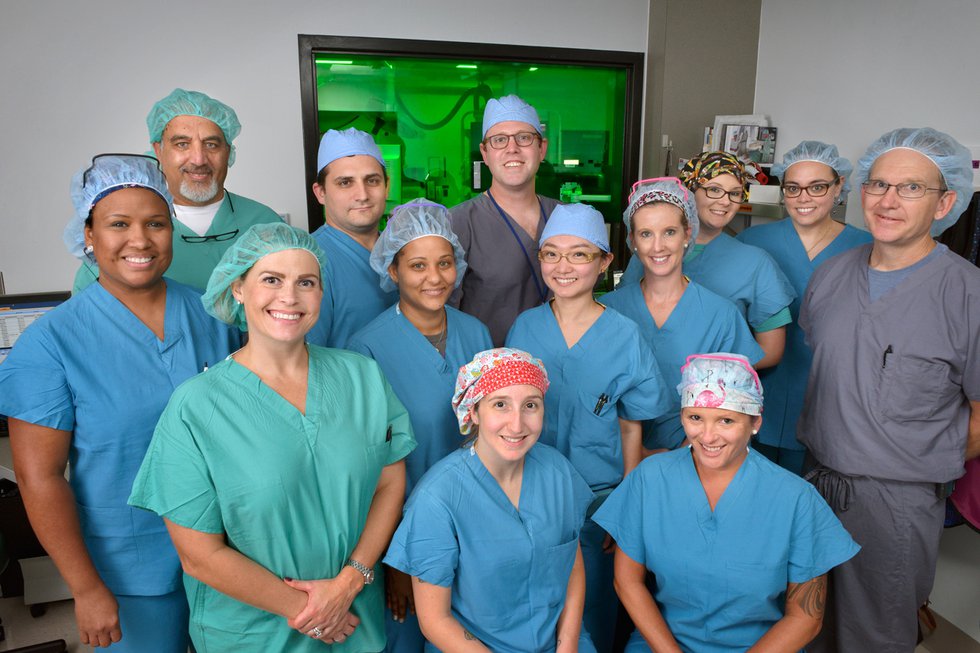Top Hospitals and Healthcare 2017: Sentara Heart teams vacuum dangerous clots from large blood vessels using game-changing technology.

In 2015, Vickie Cherry, a 41-year-old mother from Virginia Beach, had just had an emergency C-section. Soon after, she was ghting for her life with several dangerous blood clots, including one in her right aorta.
The clots were caused by placenta accreta, a condition in which blood vessels and other parts of the placenta expand too deeply into the uter- ine wall. Clots typically present in the legs and lower extremities, creat- ing a condition known as deep vein thrombosis (DVT), says Dr. David Dexter, Cherry’s vascular surgeon at Sentara Norfolk General Hospital. But “when a clot—which is usually adherent or stuck to the blood ves- sel wall—lets loose, that’s called an embolism,” explains Dexter, “and the place that the embolism is most likely to gois up the major blood vessels, through the chest, through the heart, into the lungs.” Pul- monary embolisms kill up to 200,000 people in the U.S. each year.
In the past, Cherry would have required open-heart surgery, but Dexter had another option: removing the clots in a minimally invasive procedure using an AngioVac. The device suctions out clots by way of catheters, which are inserted through two one-inch inci- sions, typically in the patient’s groin and neck, and guided by ultrasound and x-ray imaging.
In the procedure, a clot is suctioned out of one incision, and then carried to a bypass machine, where it is ltered and broken down. Then the blood is “put back into a blood vessel further along the pathway, where it then goes into the lungs and gains oxygen,” says Dexter. “We call it venous- venous bypass.”
Dexter, one of only four surgeons in the state who uses the AngioVac, was an early adopter of the technology in 2013, rst using it for clots in the vena cava and illiac veins.A cardiothoracic surgeon always assists in the procedure, and is on hand in the event of emer- gencies.
“There’s a small risk that some of the clot can break o and go into the heart, which would mandate open heart surgery for removal,” says cardio- thoracic surgeon Dr. Clinton Kemp.
Since 2015, Sentara teams have treated more than 50 AngioVac patients, including some with massive clots. “We’ve taken out clots that have extended up both legs and all the way into the vena cava—the large, draining blood vessel in the belly,” says Dexter. The majority are those with occluded vena cava lters, he says, “and we’ve pulled about a half dozen out of the right side of the heart.”
Sentara’s survival rates for the procedure are 98 percent—among them Cherry, whose son is now two years old. Sentara.com/Hampton-Roads








